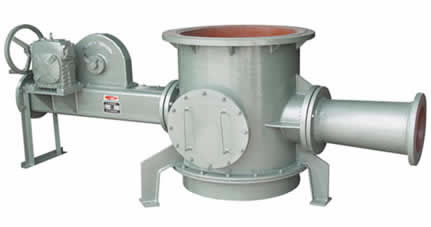
The meticulous Henan brand low pressure pneumatic conveying pump deeply explores the potential of the Indonesian coke powder industry
The strategic position of global leading products in Indonesia's industrial demand upgrade is pivotal. The nation, with a burgeoning economy, seeks to elevate its industries through technological innovation and advanced product integration. This drive for quality enhancement reflects a commitment to sustainable growth and international competitiveness. As such, multinational corporations have an opportunity to leverage their expertise and market leadership to meet the Indonesian market's evolving requirements. Strategic partnerships, localization strategies, and knowledge transfer are essential in securing long-term success within this dynamic economic landscape.

The cost-effective equipment for conveying pulverized coal (coal powder) can vary depending on the specific requirements of the application, such as the distance to be covered, the quantity of material to be transported, and whether pneumatic or mechanical conveying is preferred.
For short distances and small quantities, simple gravity conveyors like chutes or slides might be suitable due to their low cost and ease of installation. However, these are limited by the steepness of incline they can manage without risking material backflow or separation of components.
Pneumatic conveying systems using compressed air can transport larger volumes over longer distances with minimal maintenance, but they require more complex and energy-intensive compressors and piping.
In terms of mechanical conveyors, screw conveyors are often a lower-cost option compared to other conveying systems like belt or roller conveyors. They are particularly suited for horizontal or slightly inclined conveying and can handle a range of bulk materials, including pulverized coal. Screw conveyors have relatively low capital costs and are straightforward to install and maintain.
It's essential to consider factors such as power consumption, maintenance requirements, and system reliability when choosing a conveying solution. The best choice will depend on a thorough analysis of the application and operational environment, which may involve consulting with conveyor manufacturers or engineers specializing in bulk material handling.

In a coal powder conveying system, the low and medium pressure pneumatic conveying pump works in coordination with other equipment to ensure efficient transfer of materials. The system is designed so that the conveying pump draws the powdered coal from its source, such as a hopper or silo, using an air stream to create a mixture known as a "pneumatic fluidized bed" which carries the material through the pipeline to the destination, typically another processing unit or storage facility.
The coordination involves synchronizing the conveying pump's operation with other components like air compressors, valves, sensors, and control systems. For instance:
1. **Air Compressor**: It provides the compressed air required by the conveying pump for creating the fluidized bed and propelling the coal particles through the pipe. A constant supply of air is essential to maintain the flow rate and avoid blockages.
2. **Valves**: These are used to control the flow of air and material within the system. They include intake and discharge valves at the source and destination points respectively, and possibly bypass valves for emergency situations.
3. **Sensors**: Various types of sensors monitor the system, including pressure, temperature, and flow sensors. These devices provide real-time data that is crucial for maintaining the optimal operating conditions of the conveying pump and the overall system efficiency.
4. **Control Systems**: A centralized or distributed control system coordinates the operations of all the components mentioned above, ensuring that the conveying pump operates at the right pressure and velocity to meet the requirements set by the downstream process or storage facilities.
5. **Pipeline**: The pipework connecting the conveying pump to the destination must be properly sized, insulated if needed, and free from any obstructions. Its integrity is crucial to prevent leakage and maintain the integrity of the conveyed material.
The interaction between the low and medium pressure pneumatic conveying pump and these components forms a tightly integrated system that is both energy-efficient and reliable, making it an integral part of industrial applications involving bulk material handling.
In conclusion, the market prospects for low-pressure pneumatic conveying pumps in Indonesia's coke breeze industry are full of opportunities and challenges. For enterprises specializing in low-pressure pneumatic conveying pumps, it is essential to seize the opportunities presented by growing market demand while also preparing for technological and managerial innovations in this field. The government must create favorable conditions for enterprise development and remain sensitive and responsive to changes in the policy environment. Only then can we promote the continuous development and prosperity of environmentally friendly transportation technology and low-pressure pneumatic conveying pumps in Indonesia. Let us keep pace with the times and create brilliance together! Hand in hand, ZHONGYUAN wishes all customers of low-pressure pneumatic conveying pumps in Indonesia a bright future: Thank you for your valuable suggestions; we will continue to strive for improvement.
